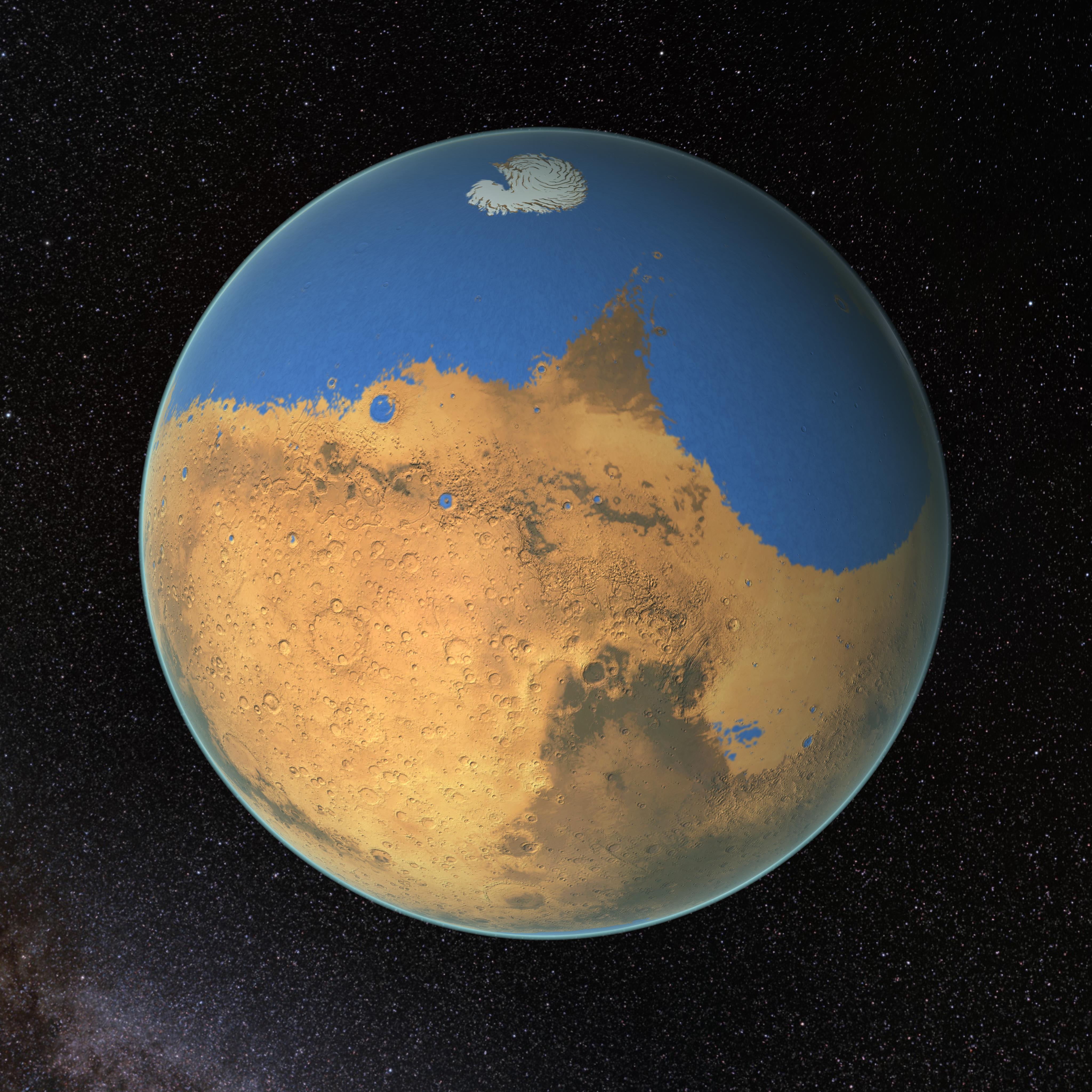Rare Meteorites May Have Formed During Large Impact on Wet Mars

The birthplace of two meteorites from Mars was apparently a zone with two craters: new findings that scientists might use to unlock secrets on the Red Planet.
The older of those two craters may have formed during an impact, which triggered boiling water to burst up and interact with minerals. All told, the picture that the researchers have pieced together based on a rare class of meteorites could help them trace these rocks to a specific patch of the Martian surface, which scientists have never managed to do before.
Knowing exactly where such meteorites came from on Mars may prove "the master key to unlocking Mars' secrets," study lead author Luke Daly, a planetary scientist at the University of Glasgow in Scotland, told Space.com.
Related: Mars Meteorites: Pieces of the Red Planet on Earth (Photos)
"We are currently trying to understand the geology of Mars from either satellite images, where we can't go pick up the rocks to check we're seeing what we think were seeing; rovers, which have a limited set of instruments, so we don't get the whole picture; or Martian meteorites, where we have the unlimited arsenal of instruments on Earth to extract all the data from them but no idea where on Mars they come from," Daly explained.
"If we knew which specific part of the Martian surface that Martian meteorites came from, we could use satellites to look at what might have happened at that surface to explain what we see in the meteorites with a much greater level of certainty, making our understanding of Mars just explode," Daly said.
Scientists analyzed two nakhilites, a kind of meteorite named after a rain of 40 stones that fell from the sky near Nakhla in Egypt in 1911. (Meteorites with similar compositions discovered since then are also called nakhilites) One of the nakhilites the researchers examined was found in Indiana in 1931, while the other was unearthed in 2003 in Antarctica.
Get the Space.com Newsletter
Breaking space news, the latest updates on rocket launches, skywatching events and more!
Previous research suggested that nakhilites were originally volcanic rocks from Mars that crystallized from magma about 1.3 billion to 1.4 billion years ago. A cosmic impact later blasted these rocks off the Red Planet about 11 million years ago.
Prior work found that veins of crystalline minerals within the nakhilites the researchers examined likely resulted from liquid water chemically reacting with volcanic rock about 630 million years ago. Since Mars is now a cold, dry planet, much research on these meteorites to date has focused on what might have generated this water.
Using scanning electron-microscope techniques and computational modeling, the scientists behind the new research analyzed thin sections of the meteorites. Within the meteorites, they found that microscopic structures that shock waves had deformed long ago seemed associated with regions that liquid water had altered, hinting that these parts of the meteorites had a common origin.
In a new paper describing their work, the researchers suggested that a cosmic impact on Mars about 630 million years ago generated shock waves that deformed microscopic structures within these rocks. At the same time, they proposed, the extraordinary heat from the impact melted permafrost below the surface of Mars, sending boiling water up like a hot spring to react with minerals within these rocks.
These findings suggest that these nakhilites may have originated from a very specific part of Mars — one where a meteorite-forming impact about 11 million years ago occurred near a far more ancient crater that changed the rock itself.
"This really narrows down the possible areas on Mars these rocks could come from," Daly said. "If we could identify the source crater on Mars for the nakhlite meteorites, we would have the geological context for these meteorites and be able to use this to interpret the data from rovers and satellites studying Mars."
The researchers are now using crater-analysis software to search through satellite images of the Martian surface to find where these meteorites might have come from.
The scientists detailed their findings online Sept. 4 in the journal Science Advances.
- Photo Gallery: Images of Martian Meteorites
- Water on Mars: Exploration & Evidence
- Mars: What We Know About the Red Planet
Follow Charles Q. Choi on Twitter @cqchoi. Follow us on Twitter @Spacedotcom and on Facebook.
Join our Space Forums to keep talking space on the latest missions, night sky and more! And if you have a news tip, correction or comment, let us know at: community@space.com.

Charles Q. Choi is a contributing writer for Space.com and Live Science. He covers all things human origins and astronomy as well as physics, animals and general science topics. Charles has a Master of Arts degree from the University of Missouri-Columbia, School of Journalism and a Bachelor of Arts degree from the University of South Florida. Charles has visited every continent on Earth, drinking rancid yak butter tea in Lhasa, snorkeling with sea lions in the Galapagos and even climbing an iceberg in Antarctica. Visit him at http://www.sciwriter.us









